Media | Articles
Ford’s 2002–05 Thunderbird could finally fly as a future classic
Remember the good old days of the late 1990s? That’s the decade that reintroduced cars from the even better old days! Be the VW New Beetle (1998) or cars with throwback influences (Plymouth Prowler, PT Cruiser, Audi TT, and Chevrolet SSR, to name a few in a long list), automakers quickly figured out that going retro meant raking in the cash. The market was primed for Ford to do the same, and that’s what it did … eventually. In the case of the Thunderbird, half-heartedly.
The new, retro-styled T-bird was introduced at the 1999 North American International Auto Show in Detroit. Its retrofuturist design pulled at all the right heartstrings and utilized Ford’s upscale DEW98 chassis, which also underpinned a pair of aspirational upstarts, the Lincoln LS and the Jaguar S-Type. The detuned Jaguar V-8 ensured the T-bird would rumble, and an impressive palette of eggshell-inspired colors completed the ’50s look. The stage was set for a rapid progression from concept to production.
But this period in Ford’s history was marred by a transition away from its core competencies. As CEO Jac Nasser suggested, “Ford can’t build the company if it holds on to a mind-set that doesn’t respond swiftly to consumers’ needs.”
Rushing the 1999 Thunderbird to production wasn’t one of those consumer needs: The final product arrived roughly two years after the concept, for the 2002 model year. Despite not striking when the iron was hot, the first year of production still netted 31,368 customers—solid numbers for a niche-interest vehicle. That number halved in 2003, a disappointing figure considering the extra 28 horsepower and fatter torque curve offered by that year’s revised V-8 engine. Sales continued to drop until the final year in 2005, but the story doesn’t end there.
While the Thunderbird was initially a flash in the pan, it was not a failure, as many across the internet suggest. The car, built on the prevailing popular design of the moment and one of the strongest American nameplates around, was unequivocally not the problem. There was a market for a retro Thunderbird roadster, one whose loyalty was on par with that of the low-volume Chevrolet Corvette. But no car is made in a vacuum, and corporate interests of a struggling company swirled above the T-Bird like hurricane-force headwinds.
The platform beneath the retro sheetmetal and the factory that created the Thunderbird were each ultimately deemed more of a liability than an asset at Ford. To a company in transition, the T-Bird and its Lincoln LS sistership would never sell in numbers that justified their unique parts and their space at a factory of questionable utility. But that didn’t stop forces from trying to alter the fate of the DEW98 platform—there could have been a happier ending.
The history of the Thunderbird has been intertwined with that of Lincoln since the 1960s, so the notion of 2000s Lincoln making its own version of this Thunderbird was not without merit. Called the Mark X, Lincoln’s concept sported unique sheetmetal and a different dashboard in place of the one shared by the Thunderbird and the LS. The same applied to the stunning Ford Forty-Nine, which used the same DEW98 underpinnings but clothed them in one of the most dramatic examples of Ford’s retrofuturist aspirations. It’s a shame that FoMoCo rejected both concepts, but the decision comes as no surprise: The factory in Wixom, Michigan, was on the chopping block (RIP, as of 2007), and Ford realized platform interchangeability with Jaguar, a profit-sucking brand it no longer wished to own, was not a good long-term move.
With the retirement of Jacques Nasser and the ascension of Bill Ford, perhaps the Thunderbird could have transferred over to the Mustang’s platform and factory, as that model shared parts with Ford products at lower price points. (Hindsight, especially looking back at the success of the Fox-body chassis that the two models shared from the late ’70s into the ’90s, suggests such a move should have always been the case.) But Ford’s new direction, The Way Forward, had no room for expensive tomfoolery: The company was hemorrhaging cash, putting up the crown jewels as collateral on $23.6 billion in loans, and fighting for its survival a mere three years before its GM and Chrysler counterparts declared bankruptcy.
Such a strained situation is absolutely, unequivocally not the time to build a brand around a luxury sports roadster, no matter its name and legacy. With added context, the notion that the 2002–05 Thunderbird was a failure falls away, revealing a tragic tale with multiple villains. More to the point, the machine itself was a solid effort with a loyal following, and though buyer demographics might look like you’d expect at a glance, there’s more to these numbers than what’s on the surface.
It shouldn’t come as a surprise that the eleventh-generation Thunderbird’s vintage style appeals to boomers more than anyone else (65 percent), but their share of T-bird quotes is also rising. Also heading upward is interest among millennials, which has nearly tripled since the beginning of 2020. Their share is a modest 3 percent, but the growth rate is significant. Though the pre-boomer market share as a whole is decreasing, ’02–05 Thunderbirds are a popular choice among this segment and outstrip buyers of the original 1955–57 Thunderbird (18 percent vs. 16). Special editions of this Thunderbird get the most attention across all demographics.
Speaking of special iterations, in 2002, Ford made 200 units of black and silver Neiman Marcus edition. The next year brought the James Bond–themed, orange and coral 007 Edition (700 units made), and a Pacific Coast Roadster edition in debuted in 2004 (1000 units). The final year of production coincided with the Thunderbird’s 50th Anniversary, so a unique Cashmere Edition (1500 units) was introduced. Unlike previous celebrations, the Cashmere Thunderbird shared its anniversary fender emblems with all 2005 models, leading many to believe all models of that vintage are commemorative editions. That confusion might undermine the market for the Thunderbird’s legitimate special editions, but their impressive design and unique trimmings are indeed attracting buyers, and the Anniversary cars are trending up in value.
Much like the 1977–79 Continental Mark V decades before, Thunderbird special editions command a modest premium over a regular Thunderbird (which was available either in a Deluxe or a more upscale Premium trim). The Neiman Marcus edition commanded a significant price premium in late 2022, and though it has gone through a slight pandemic bubble, limited supply should keep it at the top of the T-Bird market, in similar fashion to the Diamond Jubilee versions of the aforementioned Mark Series.
For all derivations of the eleventh-generation Thunderbird, Hagerty Price Guide values hit their lowest point in mid-2020, and aside from the Neiman Marcus cars, prices have rebounded since settling in 2022. Coupled with the slightly growing younger demographics (and the die-hard older fanbase), the slight upward trend in this cooler market is a healthy sign and a positive indicator for the future.
As it ages, the Thunderbird is transitioning from a vehicle for a certain generation to an icon for all ages. It is only a matter of time before younger folks embrace the eleventh-generation Thunderbird for its retro vibes coupled with the added benefits of modern performance, safety, and efficiency.
Ford once said this last Thunderbird “epitomizes the American Spirit” and “recalls a simpler, more down-to-earth era.” In that regard, Ford nailed the brief. But underneath the veneer of good times and great memories lay a company struggling to find itself, years before a global financial crisis forever altered the automotive industry. That symbolism of optimistic determination could very well be the best thing about the 2002–05 Ford Thunderbird.

***
Marketplace
Buy and sell classics with confidence
Check out the Hagerty Media homepage so you don’t miss a single story, or better yet, bookmark it. To get our best stories delivered right to your inbox, subscribe to our newsletters.
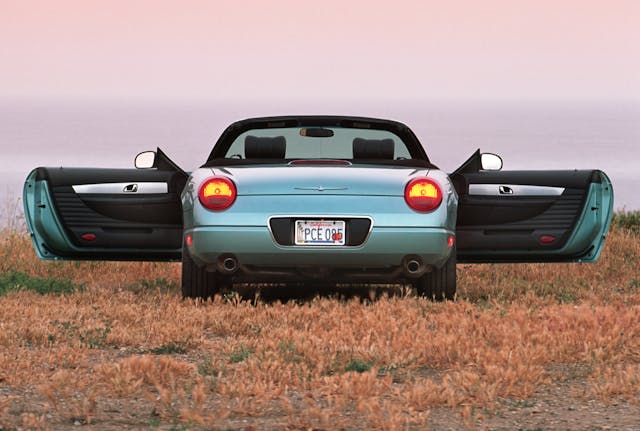
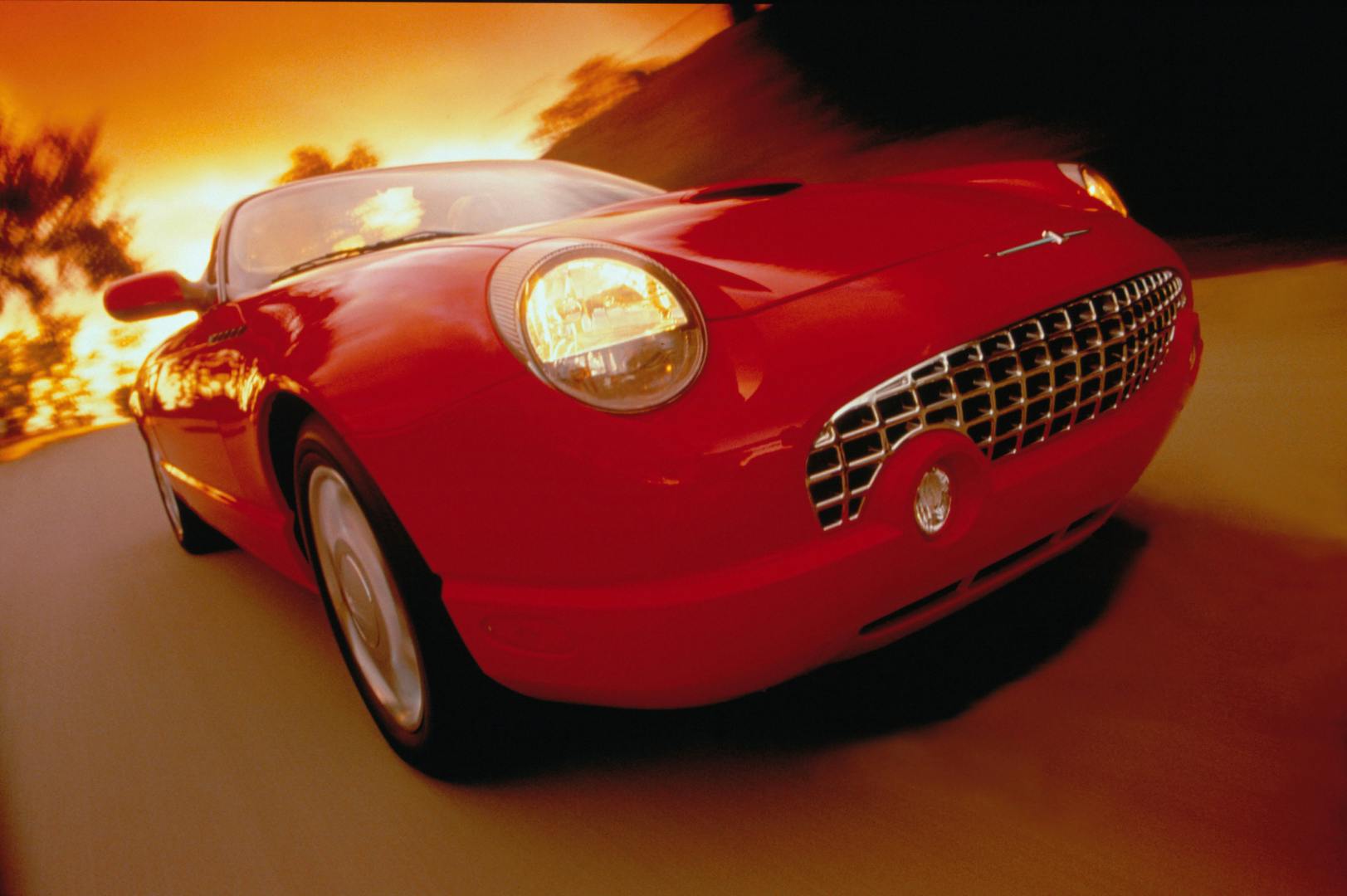
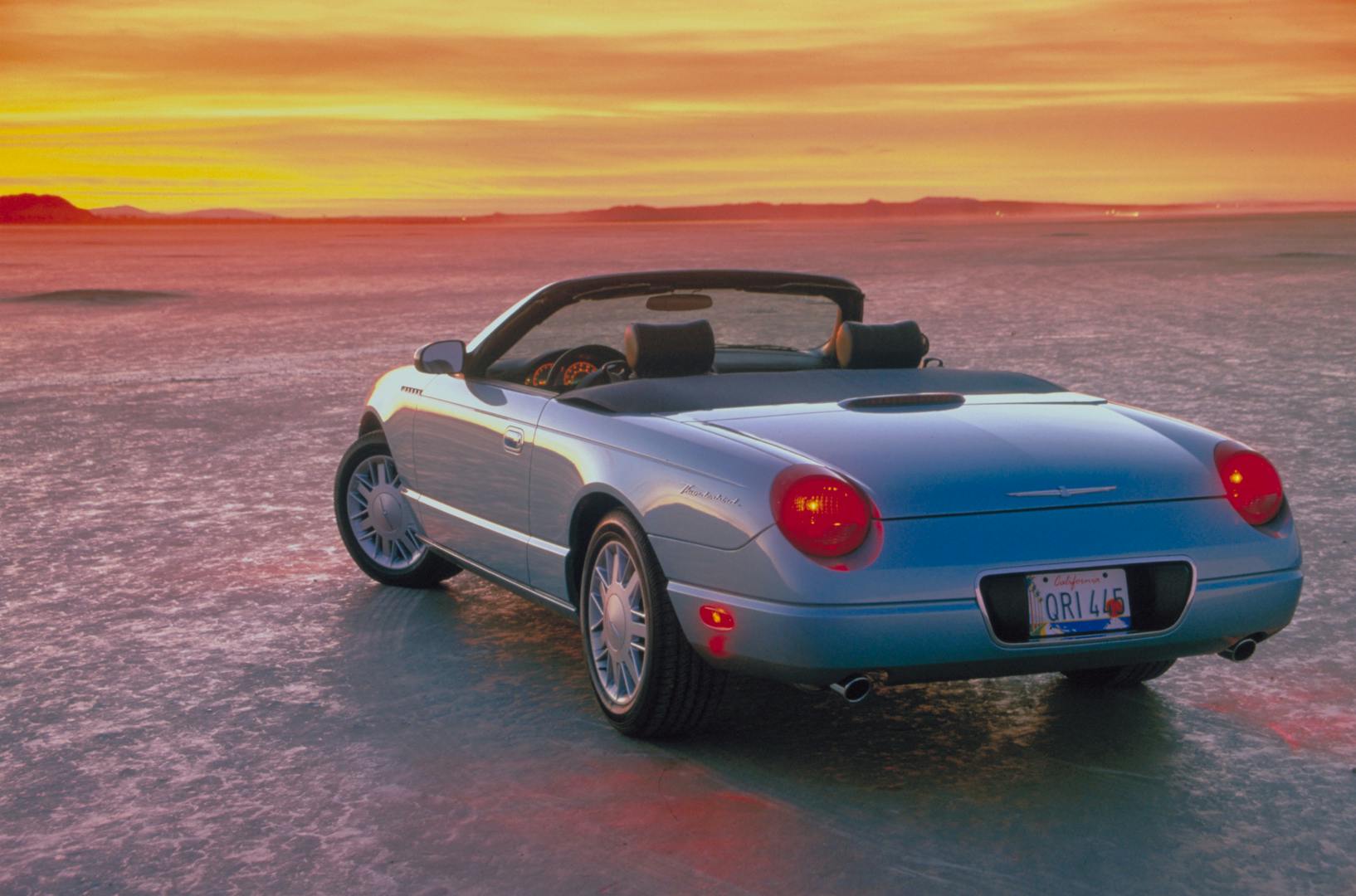
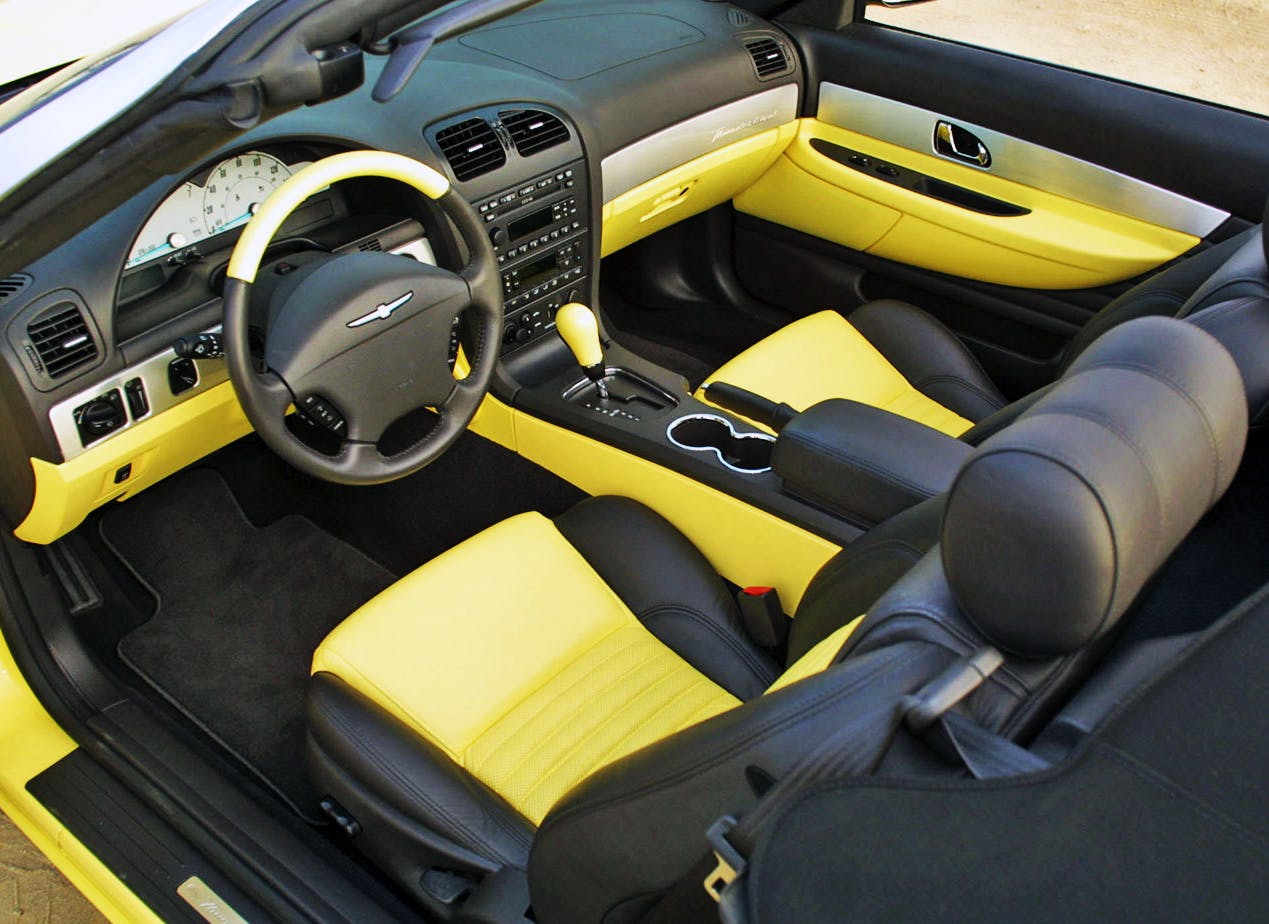


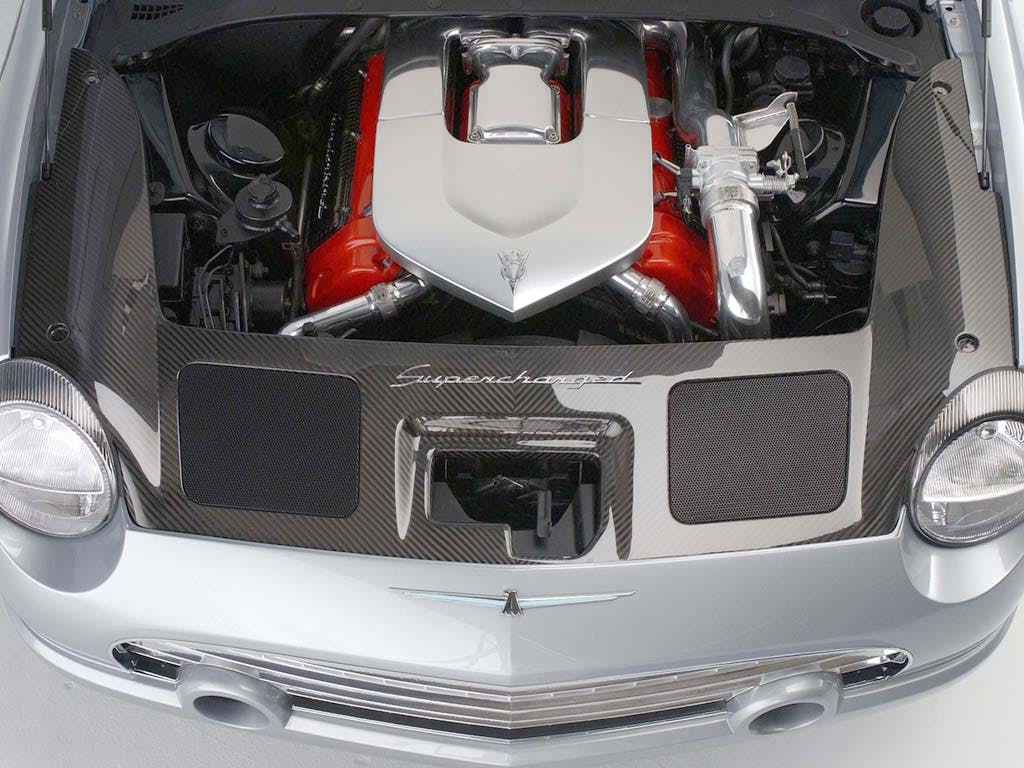

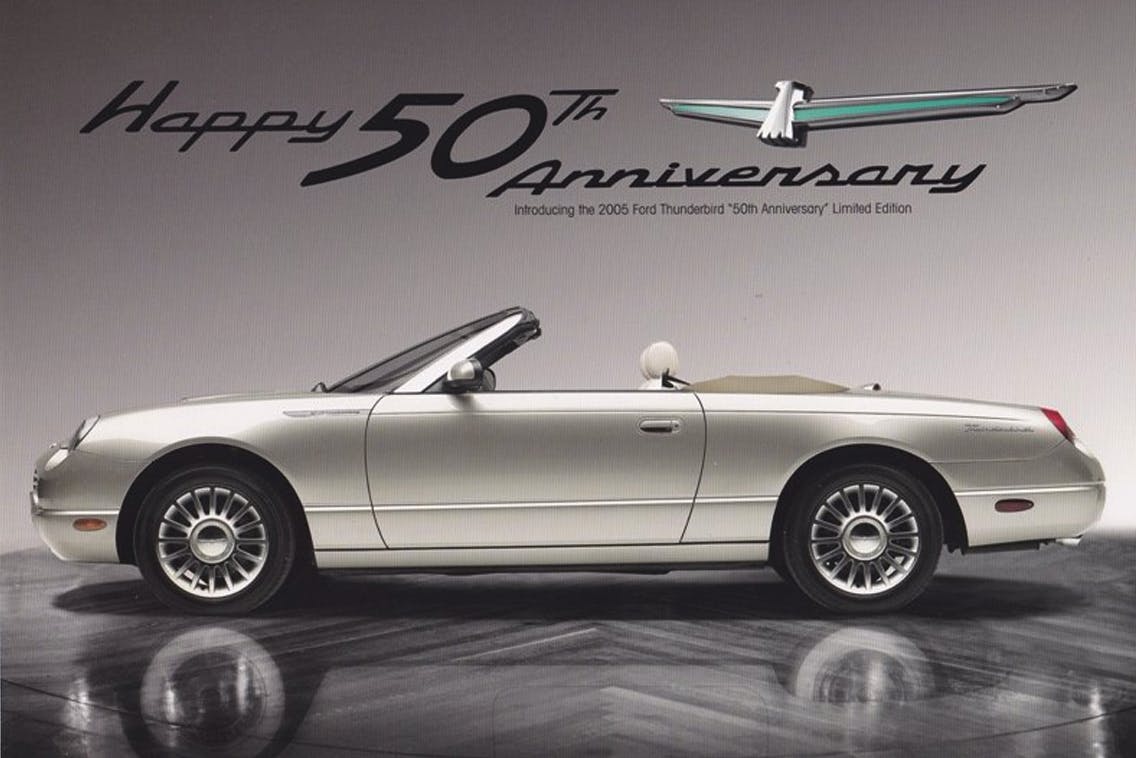
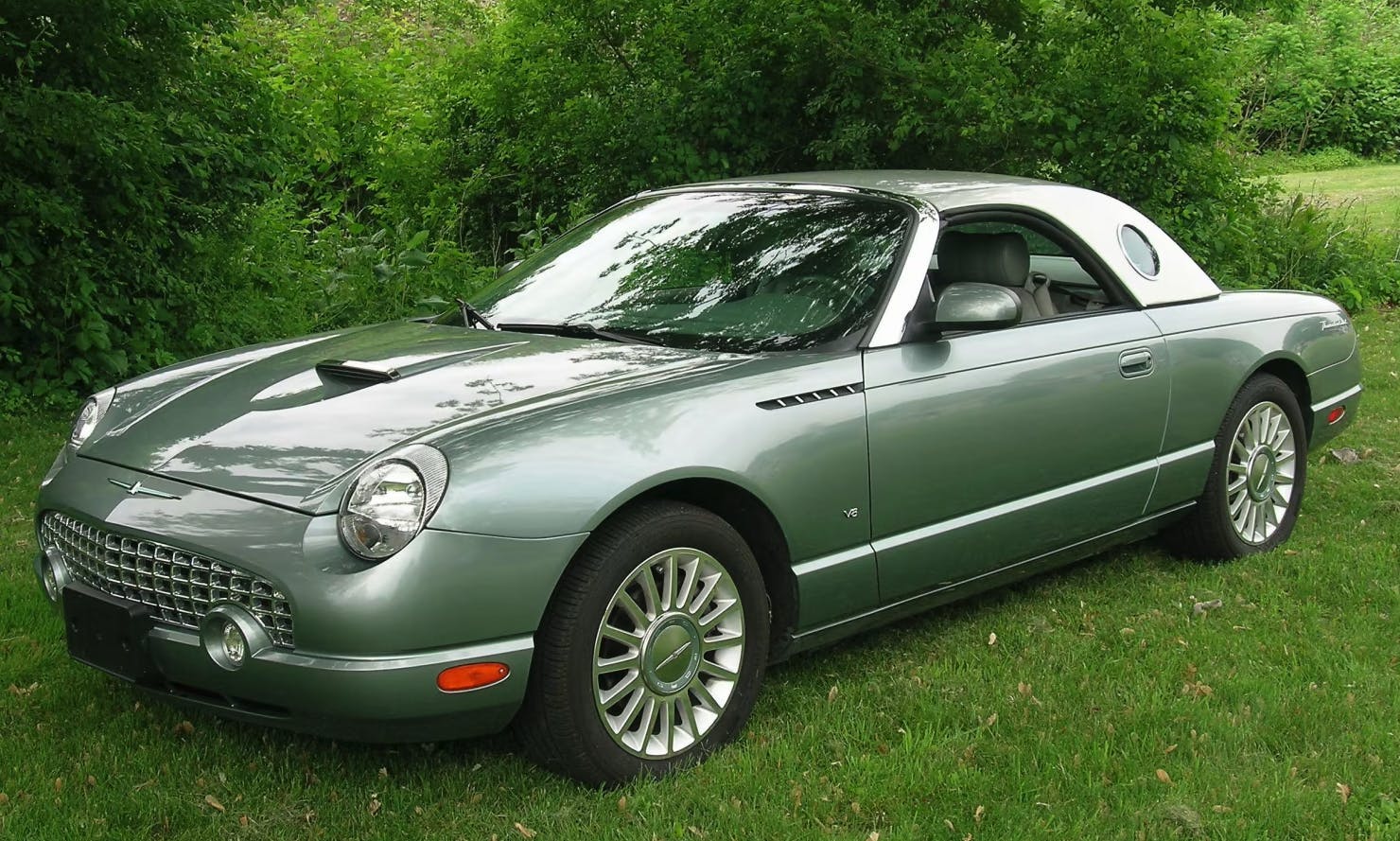
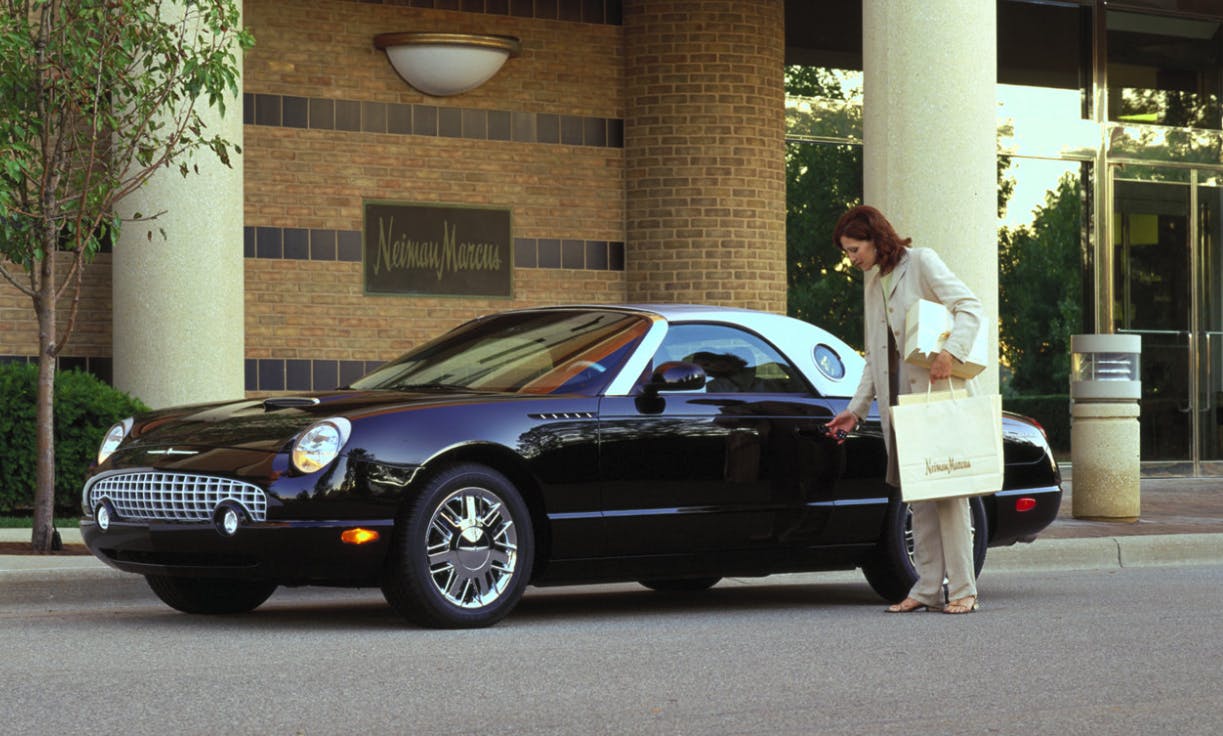
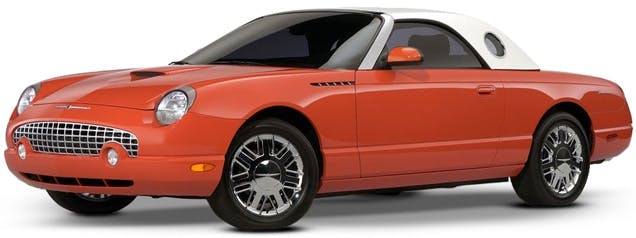














Many of these were bought by a fanbase that has insisted they were amazing classics since day 1. Asking prices have always been high –and they linger in the listings for months.
For me the design missed the mark (and the other concepts are so much better…).
The article gave me new insight. I totally agree that the Mustang platform could have been leveraged all along to give us a few other things.
This car was a disappointment. This could have been a true GT convertible.
The design was too understated and power was too low.
People just expected more.
It does make a nice car if you want an affordable convertible. As for valuable collector car that is not going to happen.
Agree – the car WAS the problem – it failed to live up to the pre-release hype by a long shot. In addition to ho-hum styling, it reeked of cost cutting. The interior in particular was cheaply put together with low-grade plastics and was a poor successor to the early birds. Can’t see these ever becoming sought-after collectibles.
Just the use of the Mustang V8 engine would have helped and some tuning options on the suspension. I think people just expected more and they could have still done it at this price point.
Also the rounded aero look was dying at this time. A couple fins on the back could have helped.
Yes to both of the above. The lack of a standard transmission turned me away. If I want vanilla, I buy ice cream.
I’m with all three of you – the car was like previous bulky, obnoxious, overgrown T-birds and if they used the Mustang engine with a smaller car it could have been a true roadster. They forgot the heritage of this car decades earlier (basically all versions from ’68 to ’88 were ugly, cheaply made, and oversized-not remotely true to the earlier birds.
This final version should have been a retro First Generation: manual transmission, smaller overall, simple tail fins, with a strong V-8.
Ford sometimes forgets what worked long time ago. They should do their homework first. I always drive a Ford. They should bring back the 1969,
1970, 1971 Mustang Maybe make
them a little shorter. This would sell. People loved the vintage cars. They would blow the doors off of Chrysler and GM.
I agree. I saw the concept car at the beginning of the century at a So-Cal car show and when the salesman asked what I thought, I said it needs 2X more engine and less shiny plating in the cockpit. He asked ‘no shiny stuff?’ I asked if he’d ever driven an open top-car in CA sunshine, ’cause stainless trim heats up to around 135F (very hot coffee) within a few minutes. Obviously not a convertible car guy. At least he looked thoughtful when I left.
NO, NOT a classic and will NEVER be a classic. If U want a classic U will get the original T-bird. Nothing against it, but it is NOT a classic…..
We had an LS with the manual transmission and V-6. The Tracy was a limited torque German type – hence the V-6. Told the salesman put in a Mustang running gear would solve the problem!! Like the Edsel Ford misread the market!
Everybody always cites the Edsel as the biggest failure of a new model in history. These T-Birds were cars that were hyped to death by Ford and the dealers. When they arrived, the dealers were adding up to $20K to the MSRP. All of the bandwagon riders climbed on and paid the premiums. Then the real market totally rejected them. They weren’t desirable then and they’re not desirable now. Ford is notorious for slapping a popular name plate on just about anything with four wheels. Look at the “evolution” of the Thunderbird as an example. Now they’re doing the same thing with the Mustang.
Hi Ken,
They really sold well in 2002 and then sales decreased to 2005 when Ford ceased making the TBird
I have a 2005 Anniversary Limited Edition Cashmere and I can tell you from first hand that they are an eye catcher, from colors to shape with a Jaguar engine and a pleasure to drive.
It’s my magic carpet which does anything I want it to do, so, if you don’t have one then you don’t know what you are discussing.
Have a great day!
Some people expected more, not all people.
The concept that used the S-Type R’s 400-hp supercharged powertrain shoulda been rushed into production. But there were a lotta coulda, woulda, shouldas when it came to this car.
No, not ALL people. Just counting on my fingers, it appears that maybe, what, 50,000 to 60,000 people actually bought one throughout the model run? Statistically, what percentage is that of the total amount of new cars bought in the U.S. during those years? It wasn’t ALL people, but it was a darned few of them!
Correct, and it woulda been a lot more people if they made halo vehicles in the same vein of Corvette Z06s, Grand Sports, etc. I’m not suggesting the T-bird would unseat the Corvette, but halo vehicles woulda bumped up sales. Then again, why bother when it’s physically impossible to financially justify the platform and the assembly line?
I agree that the car was a big dissapointment, same with the Chrysler Crossfire (I own one), but 60,000 units are a lot.
Mustang sales for 2022 is 44,332 units.
Camaro sales 2022 is 24,652 units.
I have an S-Type R V8 with the uprated Eaton supercharger rated at over 500hp and top speed reputed to be around 200mph (with the chip remapped and restrictors disabled). If this was put in this T Bird it would have ripped along (and killed numerous colonials), but what fun it would have been.
You know, I was hoping that reading this article would help me to finally resolve my feelings about this car. I have, for decades, thought that FoMoCo missed the target when it steered the T-Bird away from its mid-fifties roots and into the land of lumbering 4-door giants that totally disregarded why people fell in love with that little finned beauty that they started with. To me, Thunderbirds had become the Elvis of the sporty car world.
So when the concept car was revealed in 1999, I actually was hopeful that the company had finally seen the error of their ways – although as Sajeev rightfully points out, they were a bit late to the dance, as Retro/Neveau styles had really already come and gone. Still, this car looked interesting. And then – nothing. Fully two years (in many automotive trends, two years is a lifetime!) dragged by before any real cars hit the showrooms. And I think previous commenters have nailed this: the result failed the time-wearied expectations of the buying public in general. Yes, some bought them based on the excitement of the moment, but the initial emotional wave could not be sustained. True, there were other, internal, issues at Ford that contributed, but the bottom line is that automobile manufacturers need to build cars that satisfy consumers. That’s it. Your other problems be danged – the guys and gals waling into the showrooms don’t care. They want to be turned on by your offerings, period.
I’ve looked at these T-Bird models with varying thoughts and feelings over the past two decades. One, I think they are kinda “catchy” looking – they draw the eye. But two, once I’ve glanced, I’m already tired of looking, and I think “cheaply done imitation” with no pizazz, no real hook. So the attempt washed away the Elvis comparison for me, but it was replaced with the Pet Rock similarity…
They never made anything more exciting than the base model, even the special editions didn’t have that much unique trim and/or coloring. And forget about performance upgrades!
If only the Jaguar S-Type R donated its 400-horsepower powertrain. But that was never in the cards, and we should have unresolved feelings just like DUB6.
Now, if they’d made an optional gasser, with skinnies up front on a straight axle, Moon tank in the grill opening, and big drag slicks in back, like the “do you know this car?” Corvette in another recent article, my opinion might gel. Now that woulda been a “hook” that would have at least got me into the dealership to talk… 😁
Sales went up when they went to a 4 seater.
Clearly a good idea
1955. Convertible 16,155.
1956. Convertible 15,631.
1957. Convertible 21,380.
1958. Hardtop 35,758. Convertible 2,134. …
1959. “H” 352 cu.in. Hardtop 54,041. …
1960. “Y” 352 cu.in. Hardtop 74,547. …
1961. Hardtop 62,535. Convertible 10,516. …
1962. Hardtop (See Note 2) 68,127. Landau (Note 3)
My biggest issue with the car was the Explorer based transmission the 5R55S which had several issues including overdrive and intermediate servo bore scoring which would lead to no 2nd or 5th gears engagement. The LS and Thunderbird had a 5R55N automatic transmission which was essentially a RWD version of the S. If Ford would have offered a manual transmission option I think the vehicle would have sold better and appealed to more collectors. I understand the lack of interest in vehicles with manual transmissions in the states but in my mind specialty cars are a different market.
My wife and I went to look at them when they came out with a serious thought of buying one. I didn’t care much for the detachable hardtop but it wasn’t a deal breaker. It had the automatic transmission and my wife asked to see one with a manual. The salesman told her (a woman who a few years before rode her motorcycle to Alaska from Texas) they only came with automatics because they were marketing to women. With that he was able to offend both of us. Needless to say, no sale.
A major problem with the car was not the car itself. It was the lack of interest by the dealers and salespeople. To say they were marketing it to women only was not true. Even the Chief engineer, who was a woman, would tell you that. Sales people figured they were not going to see many of them so why bother learning anything about them. My 2002 was the first of the new Birds delivered by my dealer 22 years ago next week. We ordered it in January 2001. The car arrived in the morning, and was delivered to us in the afternoon. In that amount of time our salesperson new everything about that car as if he had been selling them for years. A friend went to inquire about one a short time later and had a totally different experience with a different sales person. He gave them misinformation, or just didn’t know answers and did not bother to find out. For me, it has been a fantastic 21 year, 51 week ride and adventure. And there are many, many other retro Bird owners who feel the same way. And new ones every day.
Okay, I’m going to defend the poor, maligned retro-bird, if for no other reason than nobody else here is.
My father-in-law had one, a 2003 he bought new. Red w/ red hard top, black interior with white accents on the steering wheel and shifter knob. He was the exact demographic these cars appealed to: age 55+ (70+ in his case), retired with a little disposable income, who wants a fun car to cruise around in with their spouse on a nice sunny day. No, that demographic would not have been interested in a manual transmission, the take rate of which would have been extremely low for obvious reasons, which is likely why Ford didn’t offer it.
I didn’t drive it much until after he passed in 2017, and had bequeathed it to his grandson (my son), who had graduated from college a couple of years earlier, and who was thrilled to have it. I drove it around on occasion or a few months after his death just to keep it good running order, and drove it 8 hours from my home down to OKC to my son, where he lived at the time.
I thought it was quite nice for what it was: a boulevard cruiser. Being a 2003 model, it had the 282 hp engine, which was punchy, especially in the mid-range. It accelerated up to interstate speeds surprisingly quickly and cruised all day at 80 in OD comfortably and with no issues, and 20+ MPG. Handling was okay, though of course not sports-car sharp, although there was quite a lot of body flex with the hard top off, a little less so with it on. Yes, the interior was plasticky and underwhelming, but so was most Detroit iron was back then.
Styling wise — and this is always subjective — I think they are attractive cars. Sure, they’re not exciting to look at, but I think they’re handsome, understated, classy. To me they pretty effectively channeled much of the classic T-bird look, borrowing design cues from several earlier T-bird generations. Just the type of design its target demographic would go after.
I can’t say whether these will become desirable collector cars one day or not. There are many cars that many people think will never be desirable, that suddenly one day become just that. So, you never know. All I know is, that T-bird was a nice ride and if I were ever in the market for something like that, I’d consider one. Maybe. Though definitely would have to have an ’03-’05 model with the extra power. They really are pretty quick.
Still a cool car- at the right price.
A two seat convertible with rear drive was always going to be a tough sell in a market that offers a Corvette. The Lincoln LS failing to catch on was a bit more surprising. I always liked the look of those.
It would not be a tough sell if it was equipped to out-power, out-muscle, and out race a Corvette. Short of that, you’re right on.
There are not many Ford classics on my favourite list. I liked the old T-Birds incl the 59 and later 4 seaters. But I was very sure that the 2002 to 2005 Thunderbirds would be isntant classics. In my opinion they deserve it. One of the few retro designs I ever liked.
Saw a beautiful black on black one here in Nashville recently. Really stood out in our world of look alike SUVs.
The biggest problem with these cars is they’re ugly. Too much of the “jelly bean” Shape of the Era and not enough emphasis on the retro design cues.
Exactly! If they had not shaved the corners off & styled it like the 55-57 birds, they would have sold a lot more a lot longer. An clear example is the later Mustangs & Challengers. These cars look like the original models, unlike the current Camaros that look like the lead character in the “CARS” movie. You see a WHOLE lot more Mustangs & Challengers than Camaros just because of that fact
The jelly bean look will take the special out of any car.
I thought and still think it was a typical Ford failure. It arrived mistimed and late, the styling had the earmarks of too many compromises with cost vs what could have been. The mechanics and potential for a performance version were mediocre at best. All this and I LOVED the first two versions of the TB and wanted to like this one but just couldn’t find any reason to. It looked cheaply built, performed like a cheap copy of a sports car and got zero support from it’s maker…. typical Ford failure in my mind.
My wife wants one of these when she retires in about 6 years. Preferably the higher horsepower version in that light aqua color. For reference, were of the Gen-X variety. I feel for what they are, they are nice cars; an affordable, nicely styled cruiser with RWD and a little oomph when needed…at a nice price point. FOR NOW. Its articles like this though, that ruin my chances of buying.
Say what you will about the 2002-2005 T-bird. Fundamentally, it is a poor mans classic sport car. Most bullet-points you would want for a Weekend pleasure drive classic. Convertible for the warm months- hardtop for the colder times. Most people notice them as unusual, seldom seen, sporty-type relics. I always admired them – so bought one for wife. She was thrilled and still is so. After 20 years, most all these T-birds have been well cared for and have much lower mileage than usual. Our 2022 turquoise model, bought in 2019 with 64k miles, was/still is in near perfect condition. While tribal rumors suggest that it was built from a hodge-podge assortment of parts pilfered from earlier vehicles – it is still a very unique special classic. After 22 years, our little beauty still drives/looks like a new car. Thinking about buying another one for backup.
would you be interested in a 2004 TBIRD with 3300 miles (kept like a show car and only driven to a few local car shows) if so respond to ragulu@comcast.net.
I would love to own one. I had a 62 a few years back and was a vey fast car. Also vey aerodynamic.